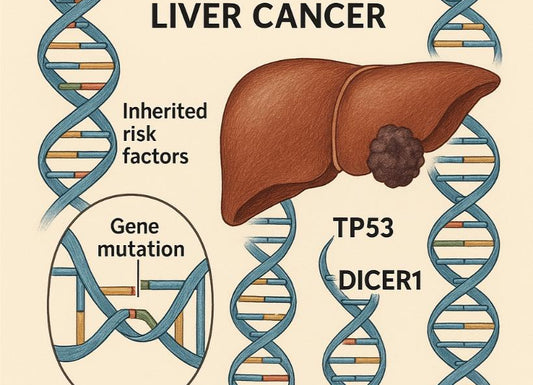What Are Lower Urinary Tract Symptoms (LUTS)?
 Written By
Yusela Aquino
Written By
Yusela Aquino

Lower Urinary Tract Symptoms (LUTS) refer to a group of common, often disruptive symptoms that involve the bladder, urethra, and sometimes, the prostate. These symptoms don’t point to one single disease—they're signs that something is off with how your body stores and releases urine.
They can show up as increased frequency, urgency, a weak urine stream, or waking up at night to pee (nocturia). Some people experience a constant sensation of not fully emptying the bladder. While these issues are often chalked up to getting older, they’re not something you just have to live with.
Recognizing LUTS early is an important step in finding out what’s causing the problem—and starting treatment that can make daily life a lot more comfortable.
What Symptoms Are Most Common?

LUTS doesn’t look the same for everyone, but some patterns are common. You might notice:
- Frequent urination, especially at night
- Sudden, urgent need to pee
- Dribbling after you’ve already gone
- A weak or slow urine stream
- Feeling like your bladder isn’t completely empty
Some people also experience pain or discomfort during urination, which could point to an infection or irritation. Over time, even minor symptoms can start to impact your sleep, your mood, and your confidence—especially when they disrupt daily routines.
What Causes LUTS?
LUTS can result from a wide range of underlying conditions. Some of the most common include:
- Benign prostatic hyperplasia (BPH) – An enlarged prostate can press on the urethra and slow urine flow.
- Overactive bladder – A condition where the bladder muscle contracts too often, even when it’s not full.
- Interstitial cystitis – A chronic bladder condition that causes pain and frequent urination, especially in women.
- Diabetes – High blood sugar can damage the nerves that help regulate bladder function.
- Neurological disorders – Conditions like multiple sclerosis or spinal cord injuries can affect bladder control.
Each of these conditions affects how the bladder and urinary system communicate with the brain and muscles that control urination.
How LUTS Is Diagnosed

Diagnosis starts with history taking. Your provider will want to know what you’re experiencing, how often it happens, and how much it affects your life. You might be asked to keep a bladder diary or describe your fluid intake and bathroom patterns.
From there, testing may include:
- Urinalysis – To check for infection, blood, or other abnormalities
- Ultrasound – To look at the bladder and prostate
- Urodynamic testing – To measure how well the bladder stores and empties urine
This information helps your healthcare team tailor a plan that addresses your specific symptoms—not just the label.
See related: Understanding Occult Blood in Urine
Who’s at Higher Risk?
LUTS is more common with age, but it can affect anyone. In men, prostate enlargement is a leading cause. In women, hormonal changes after menopause and pelvic floor dysfunction often play a role. Pregnancy can also trigger symptoms due to pressure on the bladder.
Children may deal with urinary control issues during development, and people with certain chronic conditions (like diabetes or neurological diseases) may experience symptoms earlier or more intensely. Genetics, diet, and access to care can all influence when—and how—LUTS appears.
Treatment Options That Work
Treatment depends on what’s driving your symptoms. For many, medications can help. These might include:
- Alpha blockers – To relax muscles around the bladder and prostate
- Anticholinergics or beta-3 agonists – To calm an overactive bladder
In some cases, procedures or surgery may be necessary, especially when symptoms are severe or linked to prostate obstruction. But lifestyle changes can go a long way, too:
- Pelvic floor therapy
- Reducing caffeine and alcohol
- Managing hydration
- Scheduled bathroom visits
Even modest adjustments can lead to meaningful improvements.
Mental and Emotional Impact

Living with LUTS can feel isolating. The need to constantly plan for bathroom access, deal with leaks, or wake up repeatedly during the night takes a toll. Sleep disruption can worsen fatigue, mood, and stress levels.
It’s important to recognize that urinary symptoms are more than just a physical issue—they affect emotional wellbeing, too. Support from a provider, therapy, and sometimes peer groups can help you feel less alone and more in control.
How to Track LUTS at Home
Start with a bladder diary. Write down:
- What you drink and how often
- When you urinate and how much
- Any accidents or urgency episodes
Tracking helps identify patterns and triggers. It also gives your provider clearer insights into what’s happening. There are even apps designed to simplify this process.
Home urine tests, such as dipsticks or more advanced at-home kits, can detect infections or other abnormalities. These tools offer convenience and early insights, especially when paired with regular medical checkups. Be sure to write down questions or concerns so you’re prepared for your next appointment—being informed helps you get the most out of your visit.
One highly recommended option is the Ribbon Checkup at-home urine test kit. Designed for easy use and lab-grade accuracy, this kit lets you screen for key urinary and liver health markers from the comfort of your own home. It’s a great first step for anyone noticing LUTS, helping you monitor changes over time and decide when it’s time to follow up with a healthcare provider. Early awareness leads to better outcomes—and Ribbon Checkup makes that easier than ever.
Prevention Tips You Can Start Today
Simple steps can help reduce your risk:
- Stay hydrated, but don’t overload—especially at night
- Do pelvic floor exercises regularly
- Limit caffeine, alcohol, and spicy foods
- Don’t ignore the urge to urinate—holding it too long can irritate the bladder
And perhaps most importantly, seek help early. The sooner you act, the easier it is to treat symptoms and prevent complications.
See related: Drinking Alcohol Damages Which Organ?
When to Seek Help Immediately
Not all LUTS are benign. Some signs should prompt urgent medical attention, including:
- Blood in the urine
- Painful urination with fever
- Sudden changes in bladder control
- Severe back or abdominal pain
These may indicate an infection, obstruction, or other serious issue. Don’t wait—early diagnosis can make a big difference in outcomes.
Final Thoughts
LUTS affects millions of people—but that doesn’t mean you have to live with discomfort or disruption. Understanding your symptoms is the first step toward feeling better. With the right care and support, most people can find relief and improve their quality of life.
You know your body best. If something feels off, trust that instinct. Support is available, and there are real solutions ahead.
Written by Yusela Aquino
Yusela is a medical student with a degree in Biology and a strong foundation in health communication. With experience in both research and clinical settings, she writes clear, evidence-informed content to help patients and caregivers better understand liver health, chronic disease, and transplant care.
Related Resources
- Protein in Urine
- What Indicates Renal Tubular Acidosis? Urine pH and More
- How Do You Give a Urine Sample? Short Instruction
- Foods to Avoid with UTI
References
Balik, G., Güven, E. S. G., Tekin, Y. B., Şentürk, Ş., Kağitci, M., Üstüner, I., Ural, Ü. M., & Şahin, F. K. (2014). Lower urinary tract symptoms and urinary incontinence during pregnancy. LUTS Lower Urinary Tract Symptoms, 8(2), 120–124. https://doi.org/10.1111/luts.12082
Laborde, E. E., & McVary, K. T. (n.d.). Medical management of lower urinary tract symptoms. https://pmc.ncbi.nlm.nih.gov/articles/PMC2812890/
Lepor, H. (2005). Pathophysiology of lower urinary tract symptoms in the aging male population. https://pmc.ncbi.nlm.nih.gov/articles/PMC1477625/
Lower Urinary tract Symptoms (LUTS). (2025, March 19). Cleveland Clinic. https://my.clevelandclinic.org/health/symptoms/24248-lower-urinary-tract-symptoms

Yusela is a medical student with a degree in Biology and a strong foundation in health communication. With experience in both research and clinical settings, she writes clear, evidence-informed content to help patients and caregivers better understand liver health, chronic disease, and transplant care.



